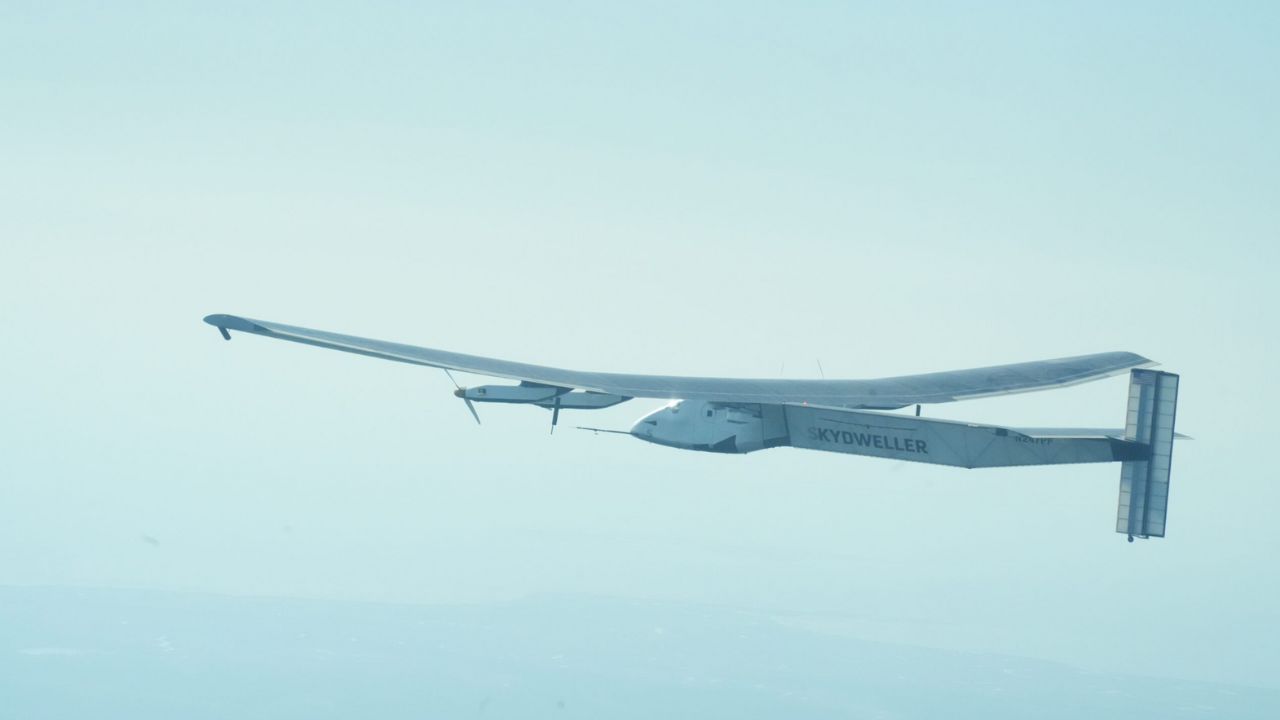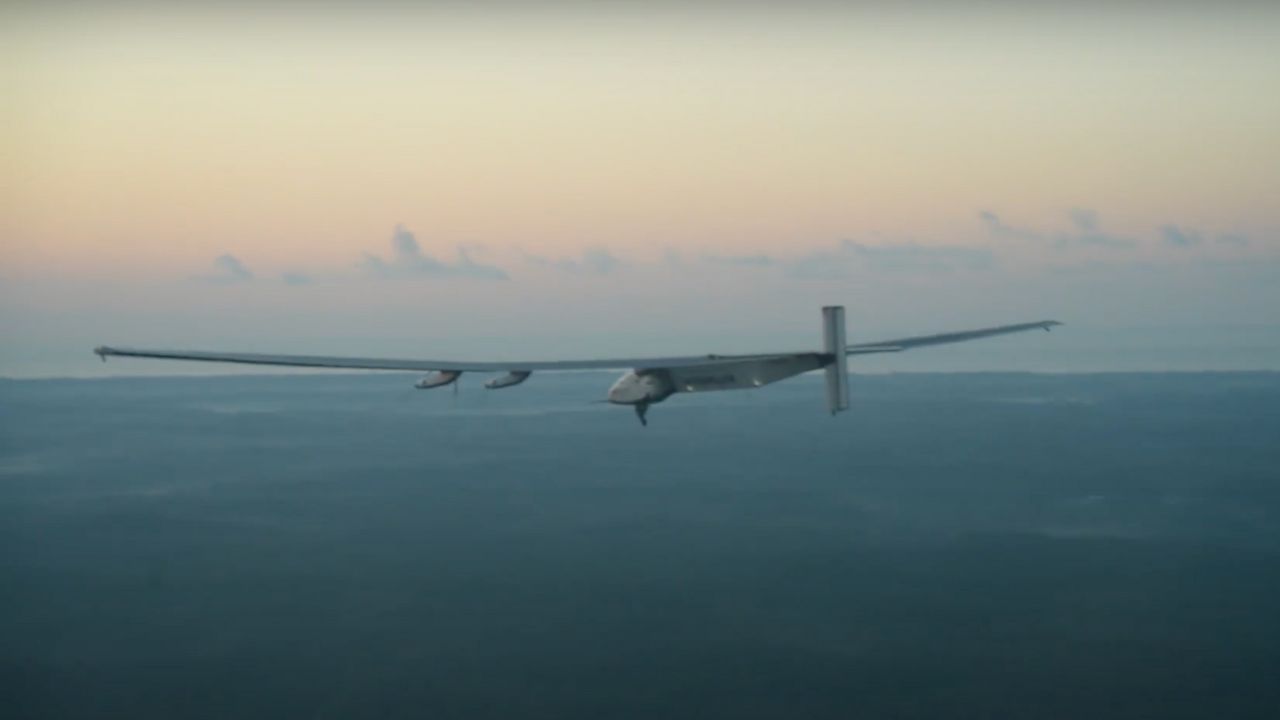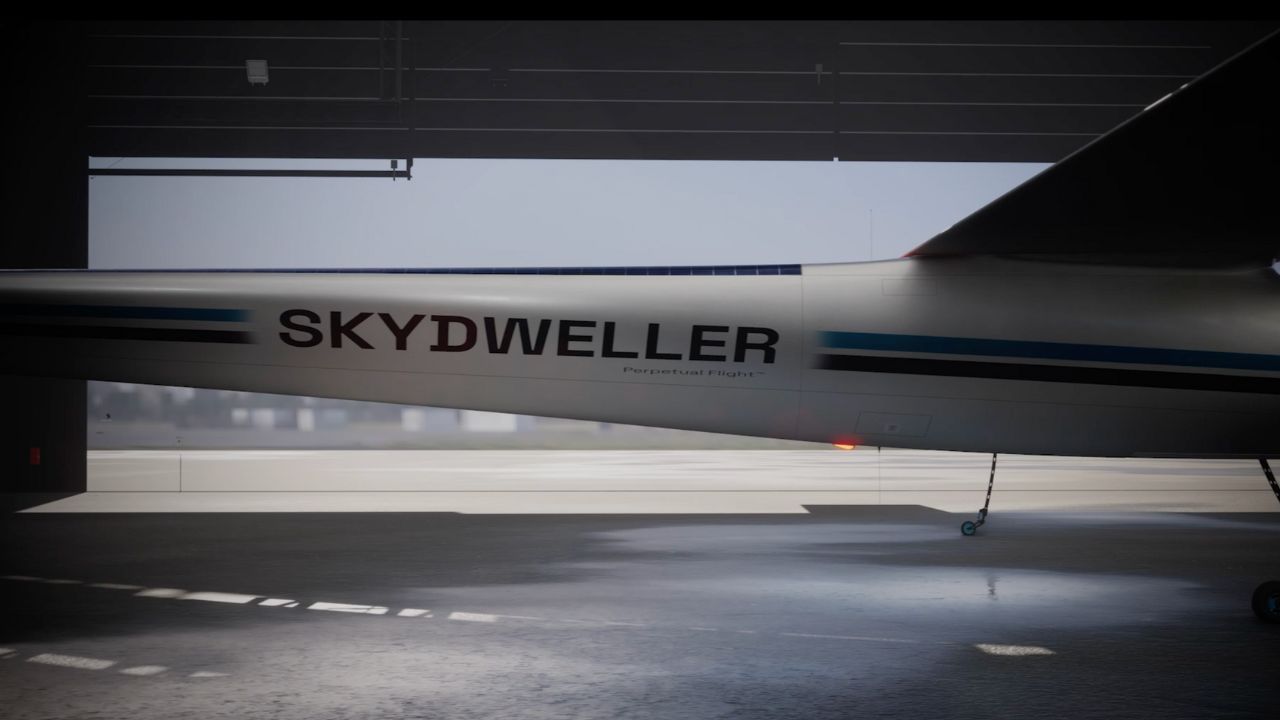Imagine an aircraft that can stay airborne for weeks, even months, without refueling. This isn’t futuristic fantasy. Skydweller Aero is working toward turning this vision into reality with its innovative solar-powered plane. As the world’s largest unmanned solar-powered aircraft, Skydweller is pushing the boundaries of what’s possible in aviation.
I’M GIVING AWAY A $500 GIFT CARD FOR THE HOLIDAYS
Enter by signing up for my free newsletter!

Credit: Skydweller Aero
A milestone achievement
Skydweller Aero recently achieved a significant milestone by completing a series of uncrewed autonomous flight tests. The longest of these flights lasted an impressive 22 ½ hours, launched from the company’s facility at Stennis International Airport in Kiln, Mississippi. This achievement demonstrates the feasibility of remaining airborne for extended periods using solar energy and batteries.

Credit: Skydweller Aero
AN ELECTRIC AIRCRAFT THE MILITARY HAS ITS EYES ON CAN TAKE OFF WITH ONLY 150 FEET OF RUNWAY
The Skydweller advantage
What sets Skydweller apart from its predecessors? Its foundation is built on the Solar Impulse, the first solar-powered aircraft to circumnavigate the globe. This heritage provides Skydweller with a robust design capable of carrying substantial payloads. With a wingspan of 236 feet (larger than a 747) and weighing just 5,620 pounds (about the same weight as a Ford F150), the Skydweller can carry up to 800 pounds of payload.

Credit: Skydweller Aero
THIS CRAZY TWO-IN-ONE ELECTRIC VEHICLE COMES EQUIPPED WITH A TWO-SEAT AIRCRAFT HIDDEN INSIDE
Military applications and beyond
The U.S. Navy has demonstrated significant interest in Skydweller’s potential, as evidenced by recent flight tests conducted as part of a Joint Concept Technology Demonstration (JCTD), which previously played a key role in the development of platforms like the Global Hawk and Predator. This initiative, overseen by the Office of the Undersecretary of Defense for Research & Engineering (OUSD R&E) and supported by a Cooperative Research & Development Agreement (CRADA) with the Naval Air Warfare Center Aircraft Division (NAWCAD), aims to evaluate Autonomous Maritime Patrol Aircraft (AMPA). Skydweller’s ability to remain airborne for extended periods could revolutionize maritime patrol and surveillance operations.
Persistent surveillance for maritime & border security
Skydweller Aero’s uncrewed, autonomous solar-powered aircraft offers continuous surveillance capabilities, enhancing maritime border security, monitoring illegal fishing activities, and preventing unauthorized operations such as trafficking and smuggling. The aircraft’s long endurance enables round-the-clock coverage, significantly bolstering national security efforts.
Telecommunications & connectivity
By serving as a non-terrestrial communications platform, Skydweller Aero provides cost-effective, airborne telecom solutions to remote areas and underserved populations. This capability not only connects the unconnected but also promotes economic development in these regions.
Disaster response & humanitarian aid
In times of crisis, Skydweller Aero’s aircraft can rapidly respond to disasters, offering real-time aerial assessments, communication relays, and tracking for relief operations. The solar-powered endurance ensures extended, consistent coverage, complementing other assets or providing solutions where alternatives are unavailable or cost-prohibitive.
Environmental monitoring & research
Skydweller Aero’s ultra-long endurance and remote access capabilities make it an invaluable asset for environmental and scientific research. From climate and wildfire monitoring to geophysical surveys, the aircraft enables meaningful, long-baseline data collection across vast regions, contributing significantly to environmental protection efforts.

Credit: Skydweller Aero
NEW MULTI-MISSION MILITARY WARPLANE TAKES FLIGHT
The road to commercialization
While military applications are the initial focus, Skydweller Aero has its sights set on commercial markets, too. CEO Robert Miller envisions a future where solar-powered aircraft could serve as airborne communication platforms, complementing satellite networks. Miller sees solar aircraft as a complementary capability to LEO satellite communications rather than a direct rival, with the potential for providing continuous coverage in specific regions.

Credit: Skydweller Aero
Overcoming technical challenges
Developing a solar-powered aircraft isn’t without its challenges. Many previous attempts by other companies have ended in failure. Skydweller’s success lies in its team’s expertise in aeroelasticity, ensuring the aircraft can withstand the stresses of flight. As CEO Robert Miller explains, “Fundamentally, my team has a lot more experience in aeroelasticity than all the other solar programs combined.”

Credit: Skydweller Aero
Kurt’s key takeaways
As the world’s largest unmanned solar aircraft, Skydweller Aero is revolutionizing aviation and opening up exciting new possibilities. From enhancing maritime patrols to serving as airborne communication platforms, the potential applications are vast. While challenges remain, Skydweller’s recent successful test flights demonstrate just how far solar aviation technology has advanced.
What challenges do you foresee in the widespread implementation of solar-powered aircraft technology, and how might they be overcome? Let us know in the comments below.
FOR MORE OF MY SECURITY ALERTS, SUBSCRIBE TO MY FREE CYBERGUY REPORT NEWSLETTER HERE










![Edit, convert, and organize PDFs effortlessly: Grab UPDF’s amazing Black Friday discounts! [Sponsored]](https://i0.wp.com/9to5mac.com/wp-content/uploads/sites/6/2024/11/UPDF-hero-image.png?resize=1200%2C628&quality=82&strip=all&ssl=1)








 English (US) ·
English (US) ·